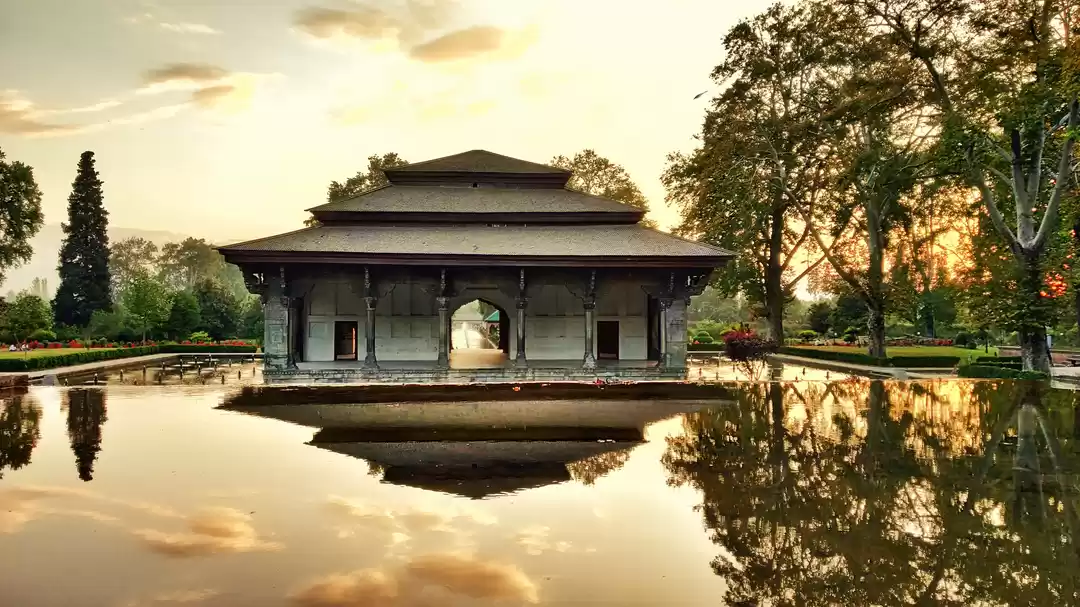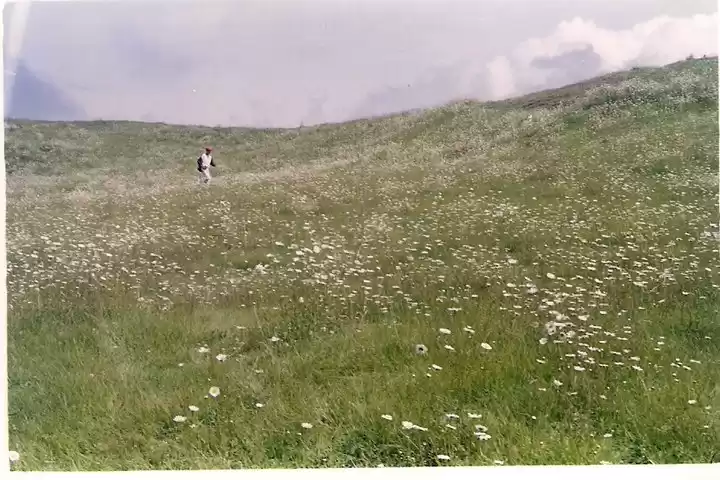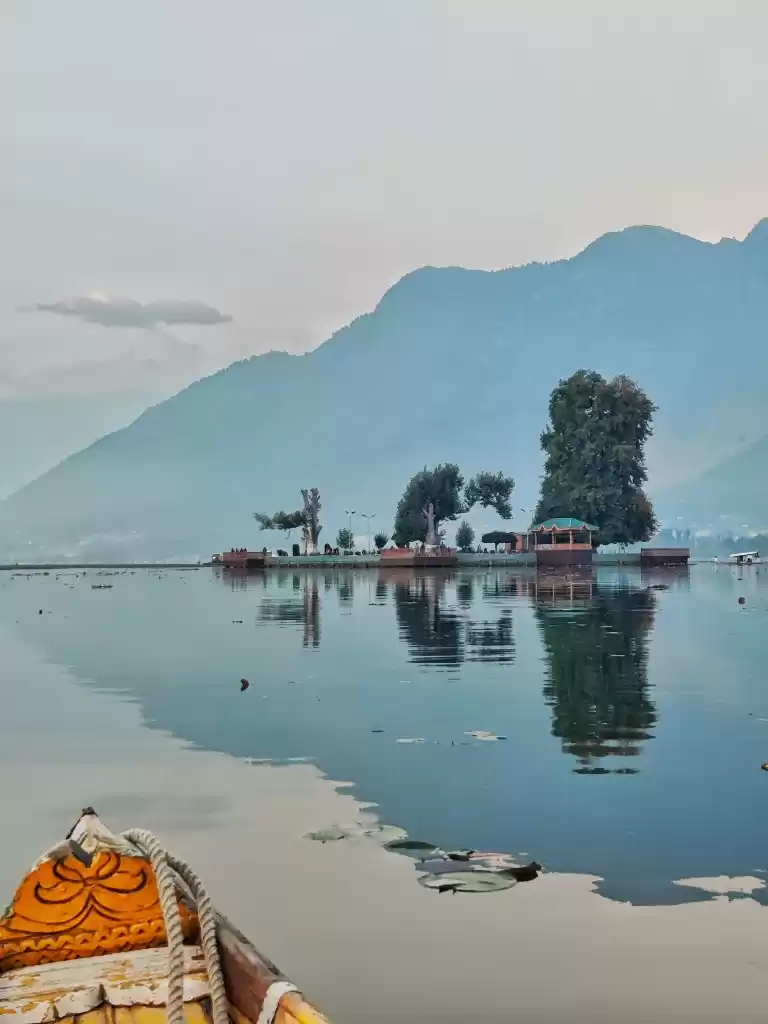Jis Khaak Ke Zameer Main Ho Aatish-E-Chinar, Mumkin Nahin Ke Sard Ho Wo Khaak-E-Arjumand
(The dust that carries in its conscience the fire of the Chinar, It is impossible for that celestial dust to cool down)
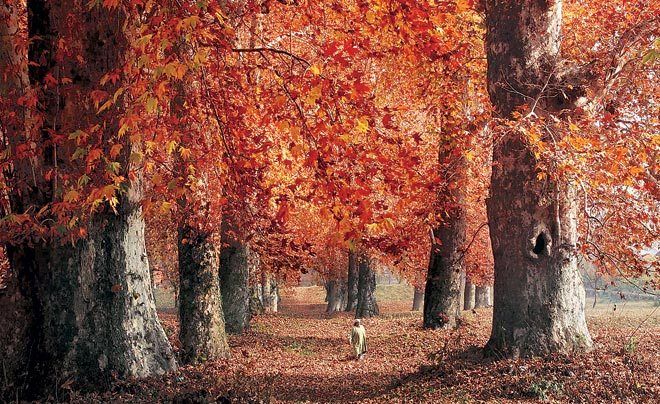
This famous couplet by poet Allama Iqbal traces the warmth of the soil of Kashmir and its people, to the flame nestling inside the majestic Chinar.
I have always visualized Kashmir as a big garden, scented with fresh blossoms and fruits and more importantly lined with majestic Chinar trees. Chinar is synonymous to Kashmir valley. The golden Chinar leaf is a symbol of Kashmir. Every village in here has at least one Chinar tree, if not more.
The name Chinar, Persian by origin means "what a fire", and is believed to be given by Mughal emperor Jahangir. The story goes like this: Emperor Jahangir on one of his tours to Kashmir saw the autumn beauty of this tree. The radiant red and yellow color of the leaves made the tree appear to be ablaze. The emperor in awe of this flaming beauty shouted out the words "Chi-Nar" and hence the tree was rechristened as what we know it today.
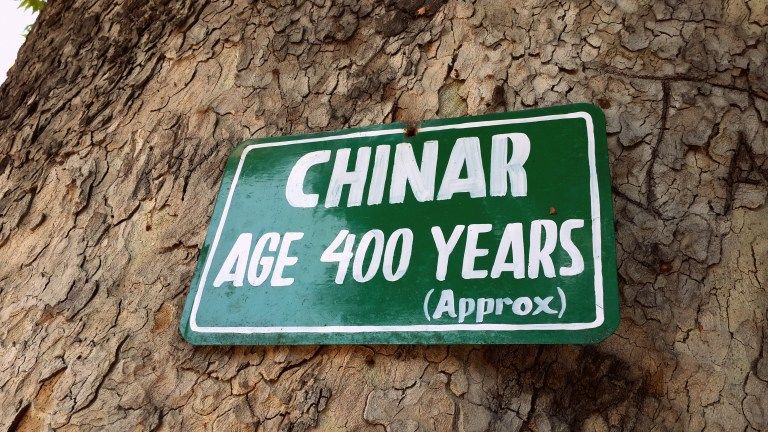
Even though the tree is believed to have existed in the valley even before the Mughal annexation, not only the credit of giving such a beautiful name but also the credit of adding it to the landscape as an attractive shade bearer goes to Mughals. References to the tree can be seen in both Akbar Nama as well as Tuzk-i-Jehangiri, in both cases, the King took shelter in the hollow trunk of the tree with its soldiers. Mughals were in love with Chinar (surprisingly even Aurangzeb) and soon declared it as the 'Royal tree'. There's a legend that Akbar ordered the tree to be irrigated with milk instead of water (Royal indeed!).
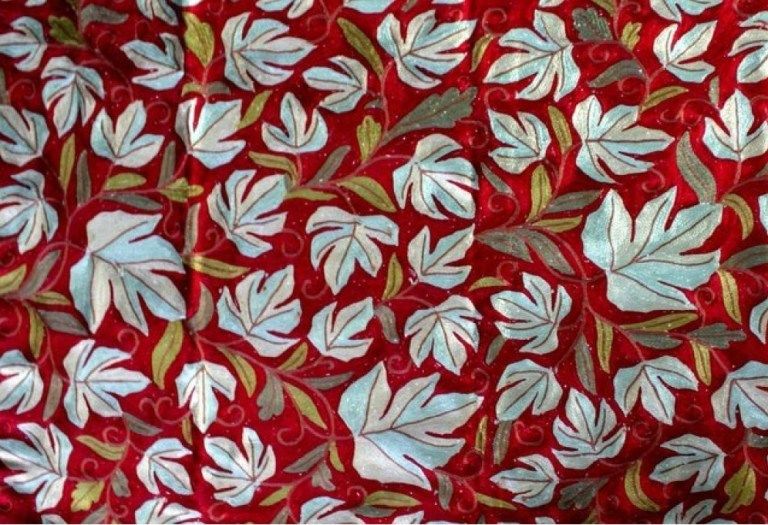
Also popularly known as Buen/Boiun in Kashmiri, the tree is an ineffaceable part of Kashmirs' history , religion, literature, politics, and romance. Chinar motif or Bhoni Tarah is the chinar leaf pattern, it is one of the most popular (and beautiful) motif in the market (and now on your list to buy).
Chinar tree due to its protective state and magnanimous form is often related to a maternal figure. Some believe the name Buen is derived from the Sanskrit word 'Bhawani' (Goddess), associating it with the divine mother.
In ancient times, the tree was considered sacred and hence planted close to religious places. Even today both Hindu and Muslim shrines in Kashmir, be it the Hazratbat shrine in Srinagar or Kheer Bhawani in Tul Mul, can be seen dotted with Chinar trees .Chinar tree at Shadipur is believed to be the ( Sangam) confluence of rivers Indus and Jhelum and is called `Prayag' by Kashmiri pandits.
Char Chinari

Char Chinari is a concept introduced by Mughals, wherein Chinars are planted on all 4 corners of a piece of land to maximize the tree shaded area.
Currently, there is a garden island on Dal Lake in Kashmir, called Rupa Lank (Silver Island) boasting this concept. Rupa Lank or Char Chinari has 4 very old chinar trees at 4 corners and a small garden in the center. Once upon a time, this used to be one of the favourite Mughal leisure spots, which later became a popular tourist stop on the Dal lake boat( shikara) tour. Shikara walas (boatmen) were ever so excited to take their customers to this island, all the way boasting of its beauty and telling all sorts of stories about Chinar trees.

But this popular tourist spot has faced the brunt of the climate, if not the life expectancy of the tree (which is believed to be very long). The Char Chinari is dying, with one tree almost dried up and the rest withering away. Even the boatmen avoid taking tourist to this spot on the lake as its a heartbreaking sight even for them.
Not only the Char Chinari but the overall number of Chinar trees has gone down alarmingly. Partly due to climatic conditions and diseases but majorly due to neglect and greed.
Since the era of the monarchy, the tree was not allowed to be cut down even when found to be growing on private lands. Till date each and every Chinar tree is considered governments property and felling/cutting the tree is banned by law. Conscious effort is being made by the state government to preserve this in Kashmir as well as promote plantation in other states like Dehradun, Delhi, and Chandigarh. The girth and size of the tree in places other than Kashmir is not very impressive. Also, it's a deep-rooting tree, which means the roots spread way beyond the crowning area, hence, they are well suited for bigger and open landscapes than close to buildings or other man-made structures. Its almost like Chinar loves Kashmir as much as Kashmiri's love it.
Chinar is a symbol of Kashmir and it belongs there. Its the most cherished Kashmiri heritage and a hallmark of the "paradise on earth".
You might have many reasons to visit Kashmir (there's no reason not to visit it), it's a beautiful place no doubt about that. Chinar might or might not be one of the reasons (well it should be). But there's no escaping this beauty once you are there. You'll be welcomed by the breezy shade in hot valley summer and the fiery eye candy in Autumn. I know you can fall in love with a landscape, but a tree? Oh yes, this is it. I'm just one of the admirers.
Trip first published on Wildflowers Journal















